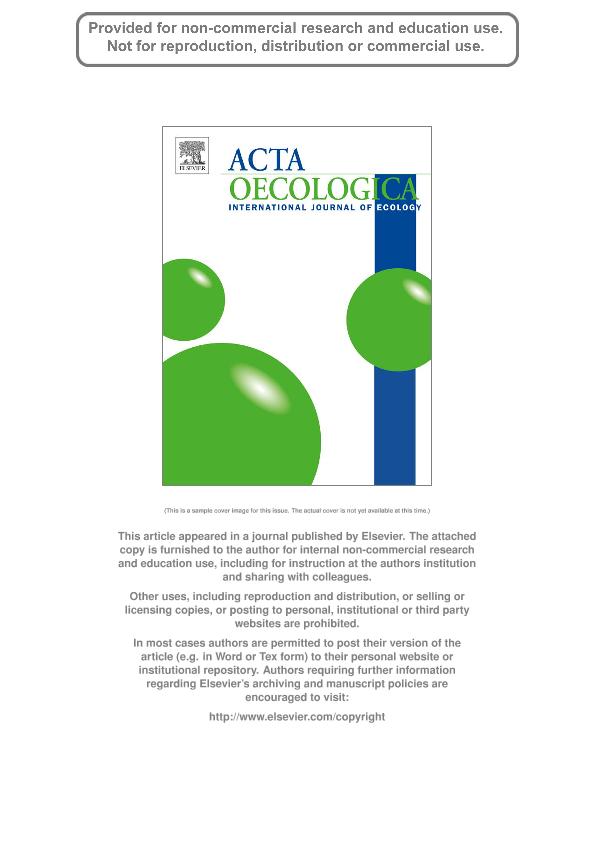Artículo
Plant recruitment success and range size: transition probabilities from ovule to reproductive individuals in two annual sympatric Ipomoea
Fecha de publicación:
03/2013
Editorial:
Gauthier-villars/editions Elsevier
Revista:
Acta Oecologica
ISSN:
1146-609X
Idioma:
Inglés
Tipo de recurso:
Artículo publicado
Clasificación temática:
Resumen
In plants, narrow geographic distributions are generally associated with low colonization and persistence<br />abilities, therefore narrowly distributed plants are expected to have lower plant recruitment success than<br />widespread species. Determining the association between recruitment success and range size requires<br />the comparison of the success in multiple life-history stages among narrowly distributed and widespread<br />congeners sharing the same habitat, an integrated approach rarely considered. We compared transition<br />probabilities from ovule to reproductive adult between the narrowly distributed annual vine Ipomoea<br />rubriflora O?Donnell (Convolvulaceae) and the widespread Ipomoea purpurea (L.) Roth at sites in Chaco<br />woodland where they co-occur. I. rubriflora had marginally lower ovule fertilization success, a lower<br />probability of seed maturation and lower seedling establishment than I. purpurea. The lowest transition<br />probability for both species was seedling emergence. Seedling establishment in I. rubriflorawas similar to<br />seedling emergence. Plant recruitment success in I. rubriflora was an order of magnitude lower than that<br />of I. purpurea. Indeed, I. rubriflora had lower total seed production per plant and smaller seed mass. Our<br />results suggest that understanding processes determining regeneration (i.e., seedling emergence and<br />establishment) may be of high importance for understanding narrow distributions in annual plants. The<br />results also suggest that the narrowly distributed species is not only at a ?numerical disadvantage? for<br />colonizing new sitesdi.e., lower total seed production per plantdbut it also has a lower per-seed<br />probability of establishing and thus to persist. However, as lower establishment success in this species<br />seemed to be associated with the lower ability to survive adverse conditions of seedlings from smallerseeded<br />species, a narrower regeneration niche might also explain its narrow distribution.
Archivos asociados
Licencia
Identificadores
Colecciones
Articulos(IMBIV)
Articulos de INST.MULTIDISCIPL.DE BIOLOGIA VEGETAL (P)
Articulos de INST.MULTIDISCIPL.DE BIOLOGIA VEGETAL (P)
Citación
Astegiano, Julia; Funes, Guillermo; Galetto, Leonardo; Plant recruitment success and range size: transition probabilities from ovule to reproductive individuals in two annual sympatric Ipomoea; Gauthier-villars/editions Elsevier; Acta Oecologica; 48; 3-2013; 76-82
Compartir
Altmétricas




